Join the FP&A Trends Webinar on March 26th at 1:00 PM CET to explore the Four...
What sets leading FP&A teams apart in today's rapidly evolving business environment? How do they move from recognising challenges to driving meaningful change? As organisations grapple with fragmented planning, slow forecasting cycles, and data quality issues, many are asking what practical steps can turn ambition into execution. What priorities are emerging from within the FP&A community itself? How can teams shift from reactive reporting to becoming proactive, strategic partners for the business?
This article explores these questions through key insights and expert reflections shared during the recent FP&A Trends webinar "2025 FP&A Trends Survey: Benchmarks, Priorities, and Best Practices" and the results of our polling questions.
From Ambition to Execution: How Leading FP&A Teams Turn Insights into Impact
Michael Coveney, Analytics Thought Leader, author, and Head of Research at FP&A Trends Group, presented key findings from this year's FP&A Trends Survey, which included responses to 36 questions and leveraged comparative insights from nine years of data.
The survey revealed a concerning decline in data-based decision-making, with only 59% of organisations basing most or all decisions on data, down from 64% in the previous year. A persistent 10% report using little to no data in their decisions. Michael emphasised that the purpose of FP&A is to enable informed, data-based decision making.
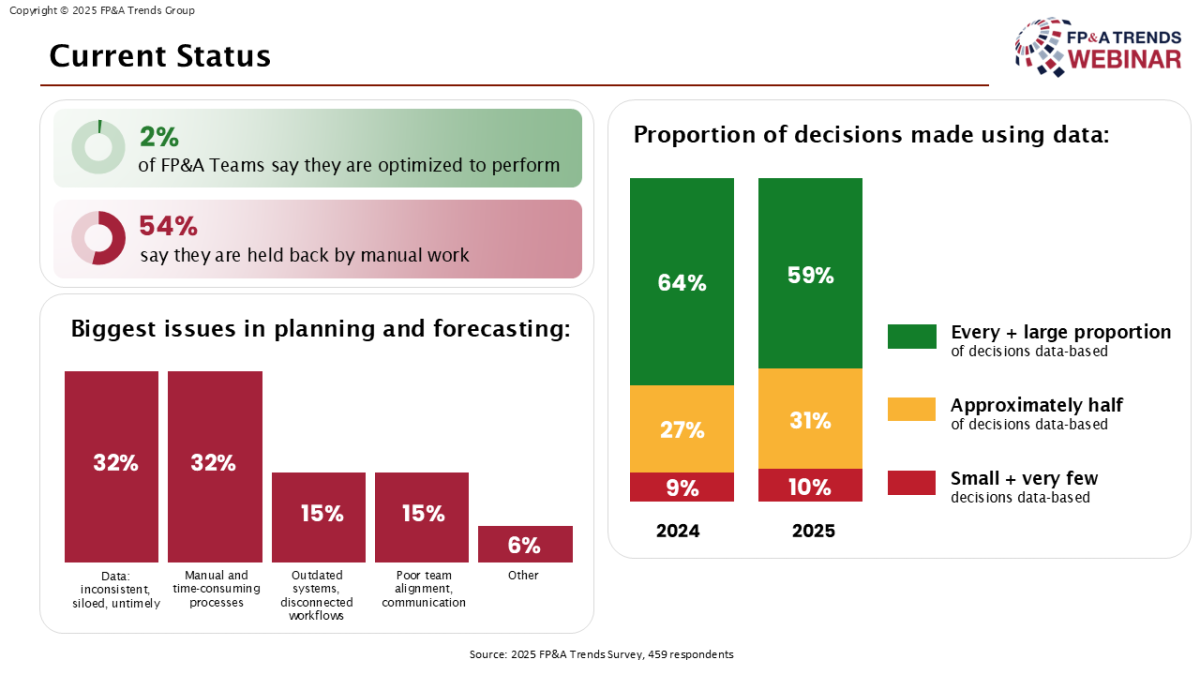
Figure 1
Despite advances in technology, only 2% of organisations consider their FP&A teams optimised, with over 60% constrained by manual processes and inconsistent data.
Michael outlined five critical areas for improving FP&A performance: Integrated FP&A processes, Scenario-Ready Forecasting, Trusted Data Foundation, Technology and Analytics Stack, and People, Skills, and Influence.

Figure 2
Findings showed that only 11% have fully aligned strategic, financial, and operational planning. Forecast Quality and speed remain limited, with only 17% using fully driver-based models. Only 17% of organisations say that their data quality is good, and technology adoption is uneven: spreadsheets remain dominant, while Modern Cloud Platforms are gaining the ground. 46% of FP&A time is still spent on data collection and validation rather than analysis. Michael concluded that stronger data foundations and system upgrades are essential, though often hampered by budget constraints.
Poll Insight: How Do You Feel After Seeing Some of the Survey Insights?
The live poll asked participants how they felt after viewing the survey insights. The majority, 46%, selected "Determined – Big gaps, but we'll bridge them," indicating a strong awareness of current challenges alongside a commitment to improvement. "Encouraged – We're on the right track, more to do" was the second most popular response with 39%, reflecting a positive but cautious outlook. 11% of respondents admitted feeling "Worried – We're far behind and struggling," while only 3% felt "Motivated – My team is best-in-class," highlighting that few view their FP&A capabilities as fully optimised.
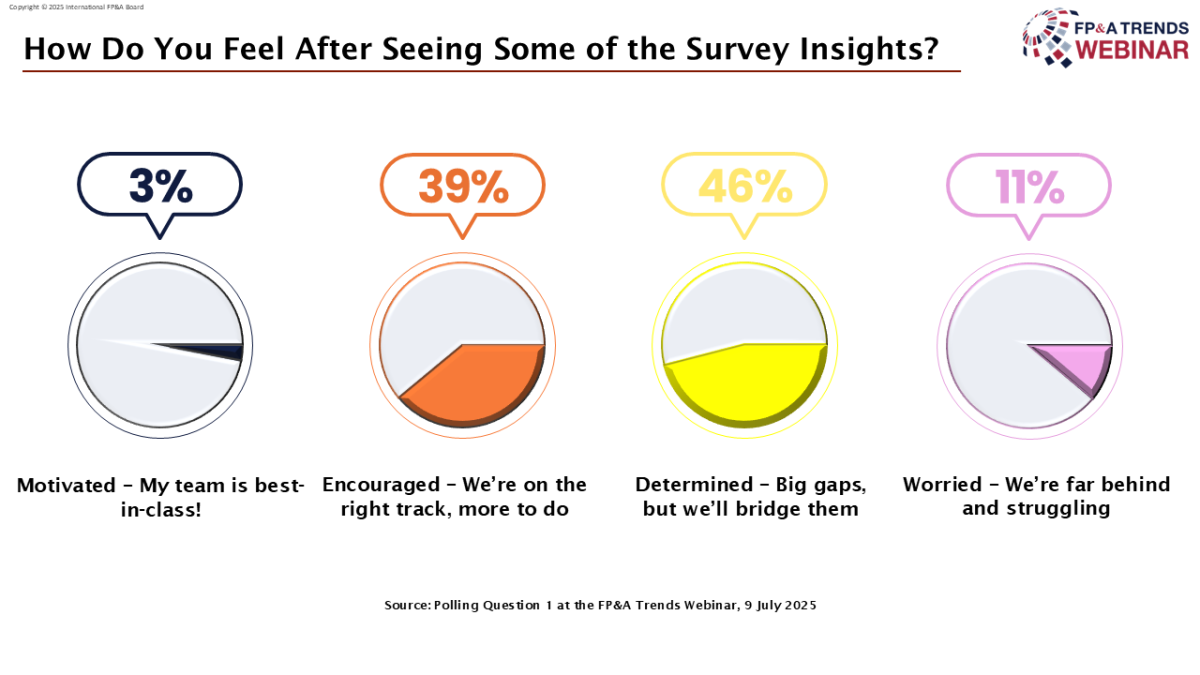
Figure 3
A Better Path Forward for FP&A
Pras Chatterjee, Global Product Marketing Director at OneStream Software, offered a compelling analysis based on the 2025 FP&A Trends Survey. He highlighted critical areas where organisations fall short and outlined actionable shifts for achieving best-in-class performance. He began by emphasising the urgent need for agility in forecasting, an essential FP&A function. Alarmingly, 29% of organisations require more than 10 days to produce a forecast, while only 15% can do so in under two days. In today's volatile business environment, such delays render forecasts obsolete and hinder decision-making.
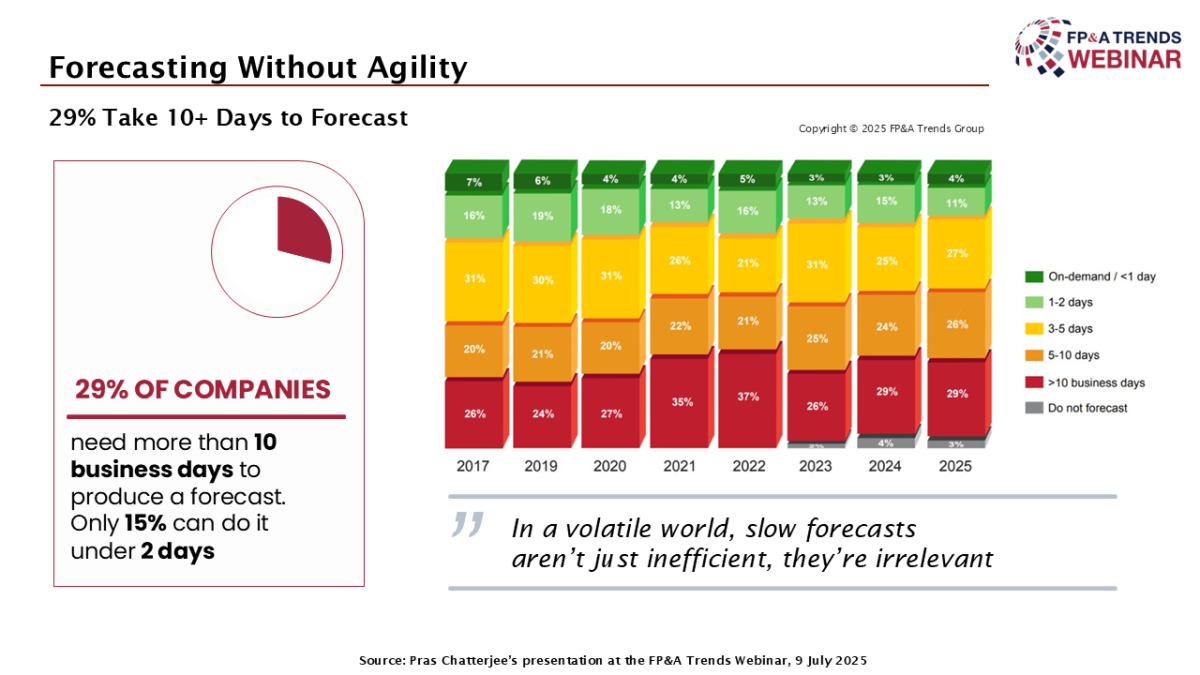
Figure 4
Pras identified fragmented systems and manual data processes as primary obstacles, advocating for simplified tech stacks and embedded, continuous forecasting. He stressed that only 11% of teams have fully integrated strategic, operational, and financial planning, most still plan in silos. This disconnect results from structural issues, conflicting ownership, and weak cross-functional collaboration rather than a lack of technology.
Driver-based planning emerged as a defining trait of high-performing teams. 77% of companies using driver-based models rate their forecasts as good or great. Pras concluded with five key imperatives: unify platforms, adopt a shared data model, make driver-based planning a standard, embrace AI for speed and insight, and build a culture of continuous planning.
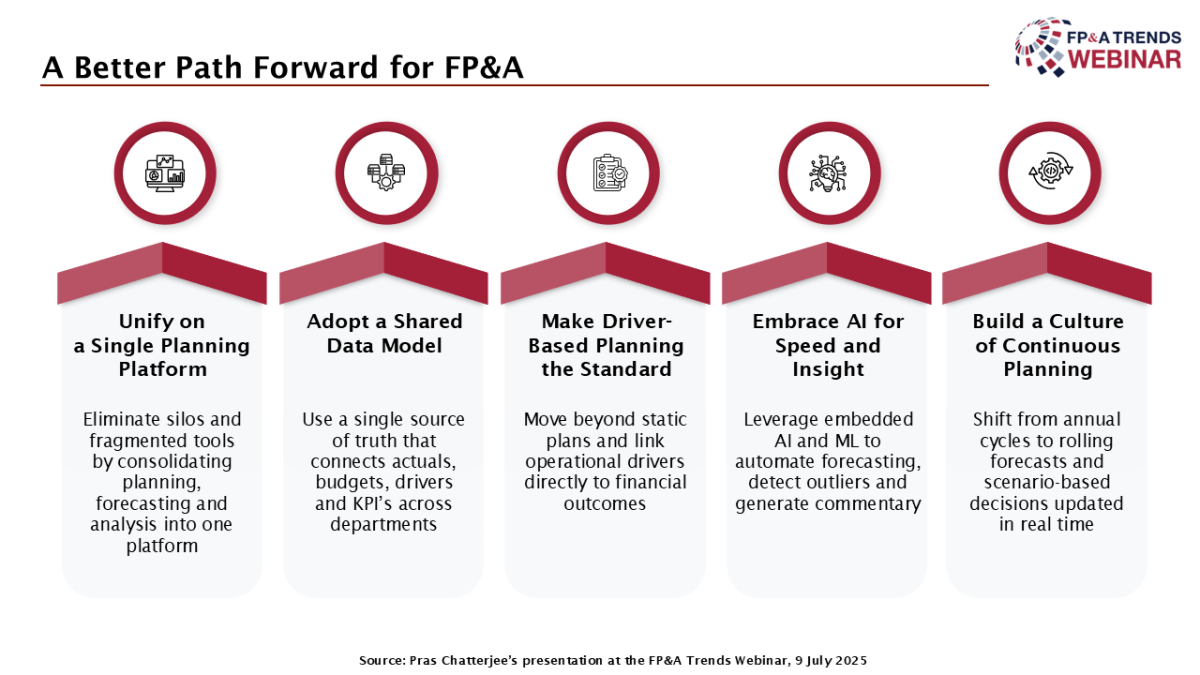
Figure 5
Though challenging, these changes are essential for FP&A teams, from reactive to strategic, from fragmented to unified, and from lagging to leading.
Poll Insight: What Is Your Team's Top Priority for FP&A Improvement?
The poll question asked participants to identify their team's top priority for FP&A improvement. The responses were fairly evenly distributed, reflecting the wide range of challenges teams face today. However, the top choice, selected by 31% of respondents, was "Create a single, unified source of data." It highlights the growing recognition that reliable, centralised data is foundational to effective planning and analysis. The second most cited priority, at 24%, was "Upgrade our planning systems and tools," indicating a continued push toward modernising outdated technologies. Strengthening business partnering and adopting AI and emerging technologies for forecasting were each selected by 22% of participants, showing that while organisations value collaboration and innovation, these areas may still be in earlier stages of adoption.
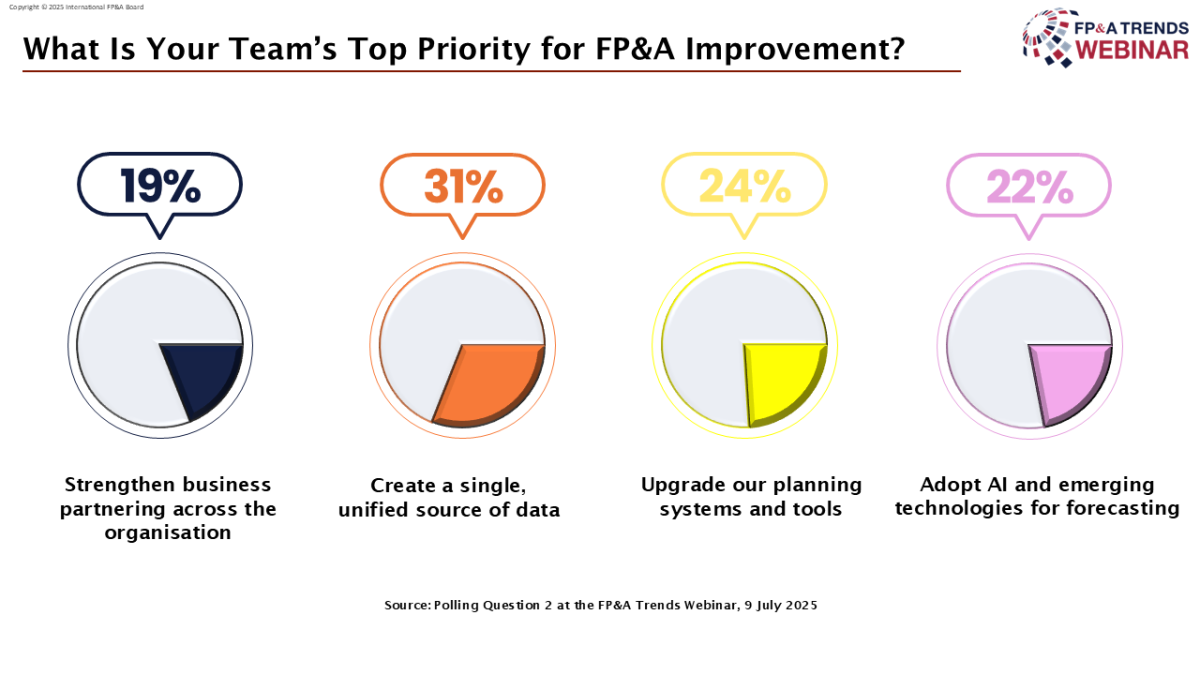
Figure 6
Conclusion
The overarching message from the survey and panel discussion is clear: the future of FP&A belongs to teams that are ready to evolve rapidly and deliberately. Success will hinge on the ability to take honest stock of current capabilities across five critical dimensions: integration, agility, data quality, technology, and skills. Rather than attempting to solve everything at once, organisations should prioritise where the gaps are greatest, create a focused improvement plan, and begin executing with urgency.
The FP&A function of tomorrow is not only integrated but also intelligent and insight-driven. To reach that future, teams must unify fragmented planning, adopt scalable technologies, and embrace data as a strategic asset. Manual work must give way to automation, and forecasting must become both faster and more forward-looking.
The key question is not whether FP&A will transform but how quickly organisations can mobilise to lead that transformation.
Thank you to Onestream, our technology sponsor, and our panellists for their invaluable contributions and thought leadership
Subscribe to
FP&A Trends Digest

We will regularly update you on the latest trends and developments in FP&A. Take the opportunity to have articles written by finance thought leaders delivered directly to your inbox; watch compelling webinars; connect with like-minded professionals; and become a part of our global community.






